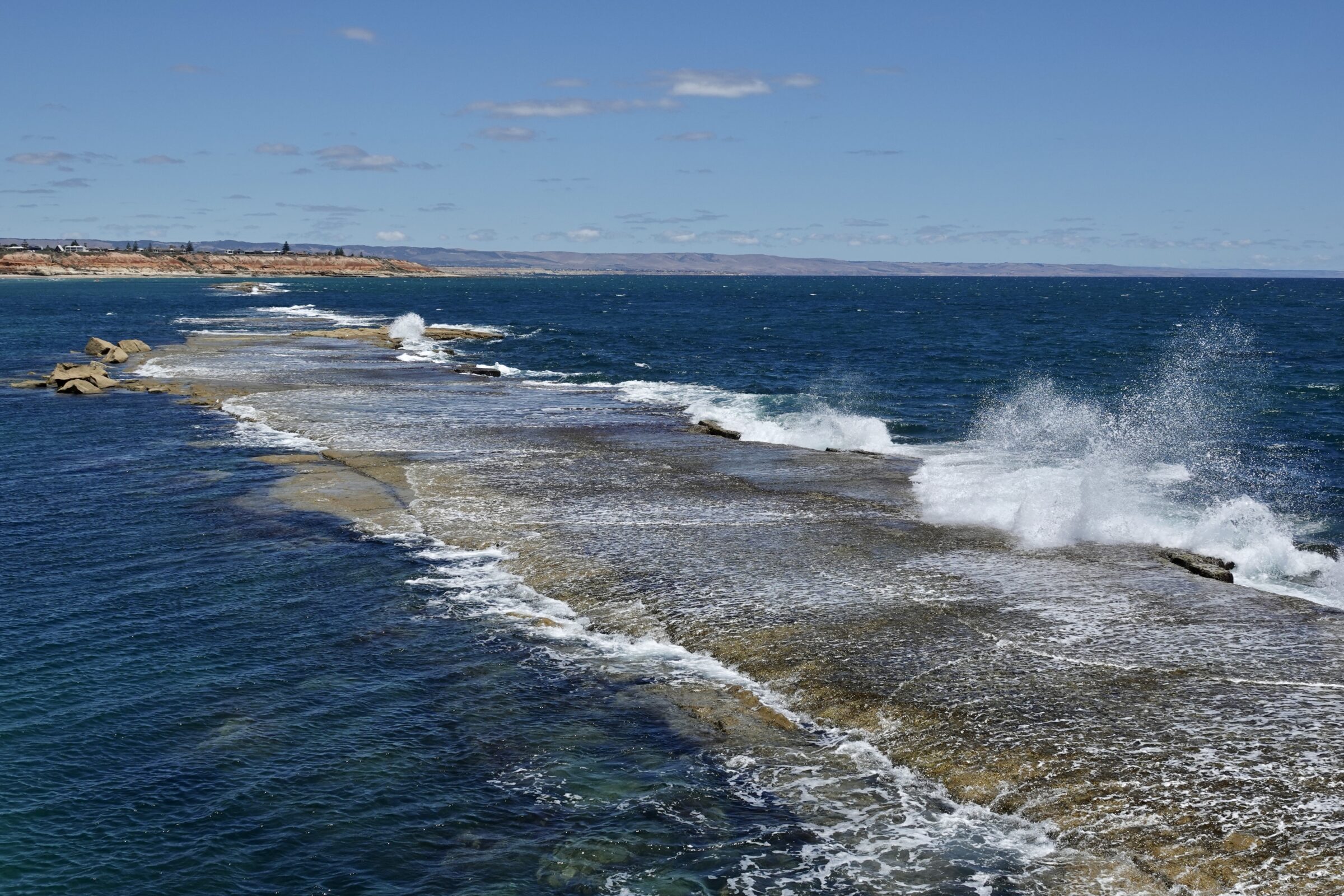From a research article published this week in the British Ecological Society’s Journal of Applied Ecology:
Our results suggest that the enrichment of natural soundscapes using underwater speakers may provide an efficient solution for boosting early recruitment and habitat building by oysters.
However, caution the researchers, restoration practitioners must consider the potential for negative impacts from speaker enrichment.
A question for you, dear reader:
before you read the quoted words, had you ever contemplated oysters’ “hearing”, much less their response to sounds played through underwater speakers?
Pictured above is South Australia’s most popular diving site.
(photo is copyright Doug Spencer, taken from Port Noarlunga Jetty at 2.14 pm on 22 December 2018)
Port Noarlunga Reef is just 34 kilometres south of Adelaide’s GPO.
It sits much less than a kilometre offshore from suburbia.
Viewed from the shore, Port Noarlunga Reef appears to “rise out the water” as the tide ebbs, then “sink” as the tide rises.
This relatively healthy temperate reef is rich in marine life.
The video below offers a “feel the serenity” perspective, but healthy reefs are much noisier places than most people imagine.
Before 1836, much of South Australia’s shoreline was fringed by living reefs; oysters were abundant.
“Free Settlers” built their settlements, in part, from oyster shell.
1500 kilometres of the SA coastline’s reefs have been destroyed; the current oyster population is reckoned to be less than one percent of what it was in 1836.
South Australia is now playing a leading role in the (modest, still) rehabilitation/re-establishment of oyster reefs, as you can read here.
The recent establishment of Glenelg’s “oyster reef” follows the success of the Windara Reef project, near Ardrossan on Yorke Peninsula.
Windara is the Southern Hemisphere’s largest restored native oyster reef.
Underwater, sound has a much longer “reach” than does light; humpback whale “songs” make good use of this fact.
Could the soundscape of a healthy reef “tell” oyster spat that here is a good place to settle?
Of course, a brand-new, man-made reef has no such soundscape.
If, however, one were to record a healthy reef’s soundscape, then amplify that sound and broadcast it through underwater speakers placed in the man-made reef’s waters…
Would that provide a “siren song” to oyster spat who, otherwise, would drift right on by, uninterested in a “barren” site?
In The Conversation this week researchers from the University of Adelaide reported what happened when the Port Noarlunga Reef’s soundscape was played through underwater speakers at Windara and Glenelg.
This attracted up to 17,000 more oysters per square metre to our restoration sites. Not only that, but over the next five months, close to four times more large oysters grew in our test areas, which accelerated habitat growth. By contrast, the areas where we played ambient sound from oyster-free areas produced only stunted habitat with few oysters settling.
Click this for the researchers’ succinct article, published in The Conversation, 27 October 2022.
You may like to read the more detailed research article, whence came this post’s opening quotes; it is even more interesting, I think.
